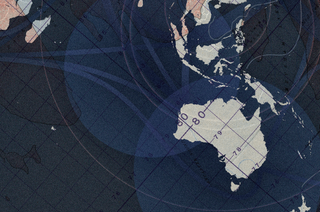In August, just days after US President Donald Trump had welcomed Russian President Vladimir Putin to a summit in Alaska, a remarkable image emerged from the White House. Ukrainian President Volodymyr Zelenskyy had scrambled to Washington to meet with Trump and shore up US support for Ukraine’s defence against Russia’s invasion. But Zelenskyy was not alone: joining him at his meeting with Trump were the leaders of Finland, France, Germany, Italy, and the United Kingdom, as well as the European secretary-general of NATO and the president of the European Commission. A photo of the entire group provided a corrective of sorts to the images that had emerged of Trump and Putin greeting each other warmly in Anchorage.
The European leaders’ decision to accompany Zelenskyy reflected a combination of courage and pragmatism. It would have been easier to condemn Trump for welcoming Putin onto US soil, or to hold a countersummit in Europe and avoid the potential domestic political embarrassment of paying homage in the Oval Office. But those options would have required the European leaders to believe that they can prevent a Russian victory in Ukraine (and guarantee their own countries’ security) without US military, economic, and diplomatic power. And they know that they cannot do so.
So instead, they leveraged their strengths — Italian Prime Minister Giorgia Meloni’s ideological proximity to Trump, British Prime Minister Keir Starmer’s relatively frequent contact with him, and Finnish President Alexander Stubb’s unique rapport with him (based in no small part on Stubb’s golfing prowess) — to charm, cajole, and push the disruptive US president more or less in the right strategic direction. The result was an agreement to ship advanced US weapons systems to Ukraine via NATO purchases, with Trump even considering Kyiv’s request for Tomahawk missiles.
For European leaders, this collaborative effort to spur Trump to stick with US allies — and with the alliance system the United States itself had built — represented a sharp departure from his first term. Back then, European leaders played supporting parts at best: their voters disdained Trump, and their personal temperaments limited their ability to connect with him. While they struggled, the leading role of “Trump manager” within the US alliance network was played by Asian leaders — most masterfully by Shinzo Abe, Japan’s prime minister at the time. A famous photo taken at the G-7 summit in Quebec in 2018 captures Abe’s approach. In it, German Chancellor Angela Merkel appears to impatiently confront a defiant or dismissive Trump while French President Emmanuel Macron and British Prime Minster Theresa May seem to be backing Merkel. Meanwhile, a pained Abe stands by Trump’s side, mimicking the US president’s body language and perhaps looking for an opportunity to diffuse the tension.
The Trump team came to office in 2017 with no clear concept for their Asia strategy, so Abe helped convince them to adopt Japan’s “free and open Indo-Pacific” framework. When Trump threatened to rain “fire and fury” on North Korea, Abe promised Japan’s support — but quietly added conditions that defined whether force should actually be used. Where many world leaders sought to avoid confrontations with the mercurial US president, Abe held 20 meetings, 32 phone calls, and five rounds of golf with Trump during his first term. “It wasn’t really 20 summits,” one Japanese diplomat quipped to me, “but the same summit 20 times.”
Abe understood that American power was indispensable to Japan’s interests and worked to shape it with considerable success. And during Trump’s first term, Asian leaders followed his example. Indian Prime Minister Narendra Modi managed to get Trump to join him in Texas in 2019 for an appearance before 50,000 members of the Indian diaspora; the rally was titled “Howdy Modi.” Australian Prime Minister Scott Morrison and his ambassador in Washington, Joe Hockey, formed close relationships with Vice President Mike Pence and Trump’s national security team to stay aligned on China strategy and engagement in the South Pacific. And even South Korean President Moon Jae-in, who came from the political left and was an unlikely partner for Trump, rallied to the US president’s side to encourage diplomacy with North Korea.
Asia seems somewhat at sea in its relationship with the United States.
But in Trump’s second term, Asian leaders have struggled to manage their alliances with Trump. No one has stepped forward to fill the hole left by Abe, who resigned in 2020 owing to illness and was assassinated in 2022. This is surprising for a number of reasons. For one, in some respects, Trump’s approach to the region resembles an “Asia first” strategy far more than it did during his first term. Moreover, polls conducted in 2024 showed that in Australia, India, Japan, and South Korea, people were initially far less alarmed about Trump’s return than were Europeans. Nor can Asian leaders’ relative reticence be pegged to their political standing. European leaders are not in stronger political situations than they were last time or than Asian leaders are today: Starmer’s approval numbers are underwater, as are those of German Chancellor Friedrich Merz, and Macron is barely holding on to power. And although European leaders are certainly more motivated to make the transatlantic relationship work because of the war in Ukraine, this does not fully explain the passive approach among Asian leaders, given the increased military and economic threat from China.
Having lost its leading Trump whisperer in Abe, Asia seems somewhat at sea in its relationship with the United States. It is possible that the role could be filled by the newly selected leader of Japan, Sanae Takaichi, a protégé of Abe’s who shares a number of his views (although her political future is uncertain after the defection of her party’s main coalition partner on October 10). But thus far in Trump’s second term, no Asian ally has managed to make inroads with the US president comparable to Abe’s. As a result, US strategy in Asia remains muddled, and Asian leaders are missing the full benefits of American partnership, including greater security against China.
No Abe here
In private, one factor that Asian officials repeatedly point to in explaining their recent passivity is the policymaking process of the second Trump administration, which is more chaotic and unpredictable than it was during the first term. Back then, they could count on reliable and influential partners inside the administration, such as National Security Adviser H. R. McMaster, Secretary of State Mike Pompeo, and Matt Pottinger, who served as senior director for Asia on the National Security Council. This time around, in contrast, the administration’s periodic purges of alleged globalists and a diminished role for the NSC have made it more difficult for allies to know where to dock on key issues or to expect counterparts in Washington to take initiative without first knowing Trump’s position.
Trump’s tariff policies also rattled Asian leaders in ways that even his first-term musings about war and peace with North Korea did not. Australia can easily survive the ten percent tariffs levied by the administration, but Trump threatened additional 200 percent tariffs on pharmaceuticals — a third rail in Australian politics — if Australia does not start paying more for US-manufactured drugs. Meanwhile, Tokyo is resigned to the 15 percent tariffs levied on Japanese exports to the United States, but the 100 percent tariffs on semiconductors that Trump has floated would be devastating for Japanese firms. And India is angry and perplexed that it must endure 50 percent tariffs for buying Russian oil even as Trump embraced Putin in Alaska and dropped the threat of further US economic sanctions on Moscow.
The reasons why this dissatisfaction has not produced a more robust effort to manage Trump vary in each country. In Japan, the main problem has been the political weakness of the ruling Liberal Democratic Party. Despite frustration over tariffs and some polls showing that only 16 percent of the Japanese public trusts Trump, support for the US-Japanese alliance remains at 90 percent or more, mostly owing to the sense of a shared threat from China. The Japanese public would take an approach like Abe’s if they could get it, but nobody has emerged with Abe’s domestic political strength or acumen for Trump. Former Prime Minister Shigeru Ishiba’s early gains in a February meeting with Trump were undone by US tariffs and Ishiba’s weak standing within his own party (he resigned in early September, triggering October elections). His successor, Takaichi, is more conservative, supports a “Japan first” approach, and has hawkish views on China that could resonate with the Trump administration.
Trump, however, is beginning to soften his own stance on China ahead of a planned 2026 visit to Beijing and hopes for a positive trade agreement with Chinese leader Xi Jinping. If she becomes prime minister, Takaichi is likely to meet Trump for the first time in a matter of weeks at the Asia-Pacific Economic Cooperation summit in South Korea, and although she would be right to caution Trump about China, as Abe did, such a warning is riskier in the face of Trump’s shifting priorities. If Trump pushes aside Takaichi in favour of US-Chinese relations, she will suffer politically at home. But Beijing’s announcement on October 9 that it would expand export restrictions on rare-earth metals (which are critical for technology manufacturing) sparked a combative response from Trump, who threatened an additional 100 percent tariff on Chinese imports and suggested he would cancel his plan to meet with Xi at APEC. Trump is due to visit Japan at the end of October, and Takaichi may be able to use the new tension between Trump and Xi to her advantage — but only if she can get her house in order first.
Australian Prime Minister Anthony Albanese appears domestically strongest, having clobbered the conservatives in national elections in May. But despite some phone calls with Trump and a photo op at the UN General Assembly, he has maintained an arms-length relationship with the US president compared with his counterparts in Japan or South Korea. When Albanese visits the White House on October 20 for his first official meeting with Trump, he’ll have the advantage of a long-standing alliance between Australia and the United States. Australia has fought alongside the United States in all of the latter’s major conflicts since World War I, and the two countries maintain strong defense and intelligence-sharing practices (of growing importance for both sides given competition with China). As part of the AUKUS agreement, signed in 2021, Australia agreed to purchase multiple US Virginia-class nuclear-powered submarines. This year’s iteration of Talisman Sabre, a bilateral military training exercise between the United States and Australia, was the largest since the program started in 2005. Canberra is also ready to work with Washington on securing supply chains for critical minerals, given Australia’s extensive mining resources.
But there have also been discordant notes in the alliance that the two leaders will have to manage. The Pentagon’s decision to review the value of AUKUS rattled Australian officials; the US ambassador to Israel, Mike Huckabee, blasted Australia for its recognition of Palestinian statehood; and the two governments could not be further apart in their positions on climate change. Albanese’s Labor government has also used a more moderate tone in its response to the China threat than has the United States, emphasising the stabilisation of relations with Beijing — although that could be a positive for Albanese, if Trump’s own approach to China continues to shift. Trump is deeply unpopular with the Labor Party’s left flank — Pew surveys show that negative views of Trump are much stronger in Australia than other parts of Asia — and some of Albanese’s advisers argue that he should keep a low profile around the American president. Albanese, however, is committed to his first meeting in Washington, where he has an opportunity to pull Trump into deeper engagement with the region — especially Southeast Asia and the Pacific, which are under pressure from China and critical to Australia’s security.
An ideological odd couple relationship seemed possible between Trump and South Korean President Lee Jae-myung, who was elected in June. Lee pulled off a masterful Oval Office performance on August 25, reassuring Trump of South Korean investment commitments to the US economy and talking down tariff levels. Although Lee comes from the progressive left and filled his team with political advisers who are veterans of the pro-democracy protests of the 1980s, which were partly shaped by anti-American (and even pro–North Korean) views, he has proven a pragmatist on foreign policy determined to strengthen ties with the United States and Japan. But in September, US Immigration and Customs Enforcement officials raided a Hyundai plant in Georgia, looking for workers overstaying their visas. The image of more than 300 South Korean employees being marched away as prisoners outraged the South Korean public, who had just been told that the relationship between Washington and Seoul was growing stronger. South Korean support for the US alliance was around 90 percent, but anti-American voices within Lee’s progressive circle are now emboldened, and the relationship between Lee and Trump is in need of repair. Trump’s attendance at APEC later this month offers a chance for reconciliation, if both sides can take advantage of it.
Perhaps no US ally was more confident about Trump’s return than Modi — and no one has been more disappointed. On top of the 50 percent tariffs he levied against India, Trump infuriated New Delhi by taking full credit for ending the military clash that broke out in May between India and Pakistan and then inviting Pakistan’s army chief to the White House. To many in India, this resembles a symbolic return to the kind of regional policy that Washington pursued 25 years ago, before it forged a strategic partnership with India. Modi could have gone the Abe route and brushed off these slights, instead working to push Trump in a better direction. But that would have been out of character for Modi, and now that his party’s governing majority in parliament has been reduced and the Indian economy is slowing, he, too, faces a more challenging domestic political situation than he did during Trump’s first term. Trump did wish Modi a happy birthday on September 17, and Modi replied warmly. But if Trump’s expected absence at the Quad summit in India later this year is any indication, the relationship between Washington and New Delhi appears likely to remain broken for a while.
Spurred by Beijing
Abe’s disciplined approach to Trump, and to competition with China, provided the conceptual glue needed to cement an Asia strategy that also benefited Japan — the United States’ own version of a free and open Indo-Pacific framework. The August meeting between Trump and European leaders had a similar purpose, allowing Europe to stabilise US-Ukrainian policy, keep Zelenskyy in the fight, and bolster Europe’s security in spite of Putin’s welcome in Alaska.
But without a skilful manager like Abe, the trajectory of Trump’s Asia approach remains uncertain. Some in the current administration share the first Trump administration’s alarm about Chinese hegemonic ambitions. Others — including, it appears, Trump — see diplomacy with China as an opportunity for trade deals in the near term and are willing to set aside other concerns. As key pillars in the US security architecture built over the past 20 years are crumbling (such as the Quad), US allies are urging greater American engagement with the Indo-Pacific, especially after major cuts to development assistance created openings for Chinese coercion in the region.
The second Trump administration is certainly more difficult to manage given the president’s love of tariffs and general unpredictability, and no current Asian leader can claim a mandate at home comparable to Abe’s. But although no Abe-like Trump whisperer currently exists among Asia’s leaders, that absence cannot be allowed to remain. Asian leaders have an even greater incentive to keep Washington in play than they did in 2017 because of China’s ambitions, and only the United States has the composite power Asia needs to maintain regional defenses and deter Beijing’s aggression. Despite Trump’s unpredictability, key members of his administration are ready to step up engagement with Asia. This time, however, the initiative will likely come only from the top. Thus, personal relationships with Trump are even more important for Asian powers than they were during Trump’s first term. Whatever combination of flattery, persuasion, and political alignment is required, Asian leaders should learn from their European counterparts and ensure that the United States stays in the game.





